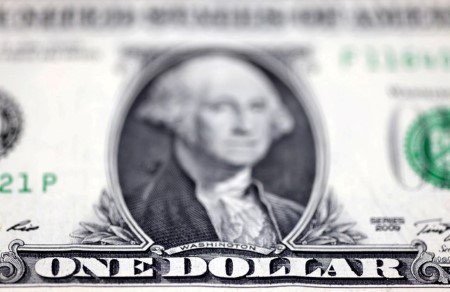




Inflation Update: Green light for easing
 DOWNLOAD
DOWNLOAD

December Economic Update: One for them, one for us
 DOWNLOAD
DOWNLOAD

Philippines Trade Update: Trade trajectories trend along
 DOWNLOAD
DOWNLOAD


Dollar extends fall after inflation data knock

NEW YORK, Nov 11 (Reuters) – The dollar fell across the board for a second straight day on Friday, as investors favored riskier currencies following signs U.S. inflation is cooling that boosted the case for the Federal Reserve to ease off its hefty interest rate hikes.
Friday’s dollar weakness was an extension of the move set off after Thursday’s data showed U.S. consumer inflation rose 7.7% year-on-year in October, its slowest rate since January and below forecasts for 8%.
Against a basket of currencies .DXY, the dollar was down about 3.8% over two sessions, on pace for its largest two-day percentage loss since March 2009.
The U.S. currency’s long rally over the last two years had drawn a host of dollar bulls leading to crowded positioning and Thursday’s data left a lot of them looking for a quick exit, strategists said.
“It’s not just short term trend-followers, momentum players having to get out of positions, but some long-term structural long dollar positions have to be unwound,” said Marc Chandler, chief market strategist at Bannockburn Global Forex in New York.
The dollar was 1.7% lower against the Japanese yen at 138.55 yen while the euro advanced 1.46% against the U.S. unit to $1.036.
“The dollar is one of those markets that is extreme in its overvaluation – there is a strong chance we have seen the peak,” Jim Cielinski, global head of fixed income at Janus Henderson Investors told the Reuters Global Markets Forum on Friday.
Still, some strategists warned that dollar bears remain vulnerable to a possible near-term rebound.
“Yes, more people have become convinced the dollar has peaked but the move has been so sharp that I caution people against chasing it,” Bannockburn’s Chandler said.
The dollar found little support from survey data on Friday that showed U.S. consumer sentiment fell in November, pulled down by persistent worries about inflation and higher borrowing costs.
The risk-sensitive Australian AUD=D3 and New Zealand dollars NZD=D3 advanced 1.4% and 1.6%, respectively, against the greenback.
Investor risk appetite got an additional boost from Chinese health authorities easing some of the country’s strict COVID-19 restrictions, including shortening quarantine times for close contacts of cases and inbound travellers.
Sterling, meanwhile, GBP=D3 rose 1.22% against the dollar to $1.1853 after UK data showed the economy did not contract as much as expected in the three months to September, although it is still entering what is likely to be a lengthy recession.
The dollar was 2.4% lower against the Swiss franc at 0.94025 francs after Swiss National Bank Chairman Thomas Jordan said on Friday the bank was prepared to take “all measures necessary” to bring inflation back down to its 0-2% target range.
Cryptocurrencies remained under pressure from ongoing turmoil in the crypto world after exchange FTX’s fall. FTX’s native token, FTT FTT=CCCL, was last down 26.7% at $2.731, taking its month-to-date losses to nearly 90%.
(Reporting by Saqib Iqbal Ahmed; Additional reporting by Anisha Sircar in Bengaluru; Editing by Richard Chang and Emelia Sithole-Matarise)
This article originally appeared on reuters.com





 By Reuters
By Reuters